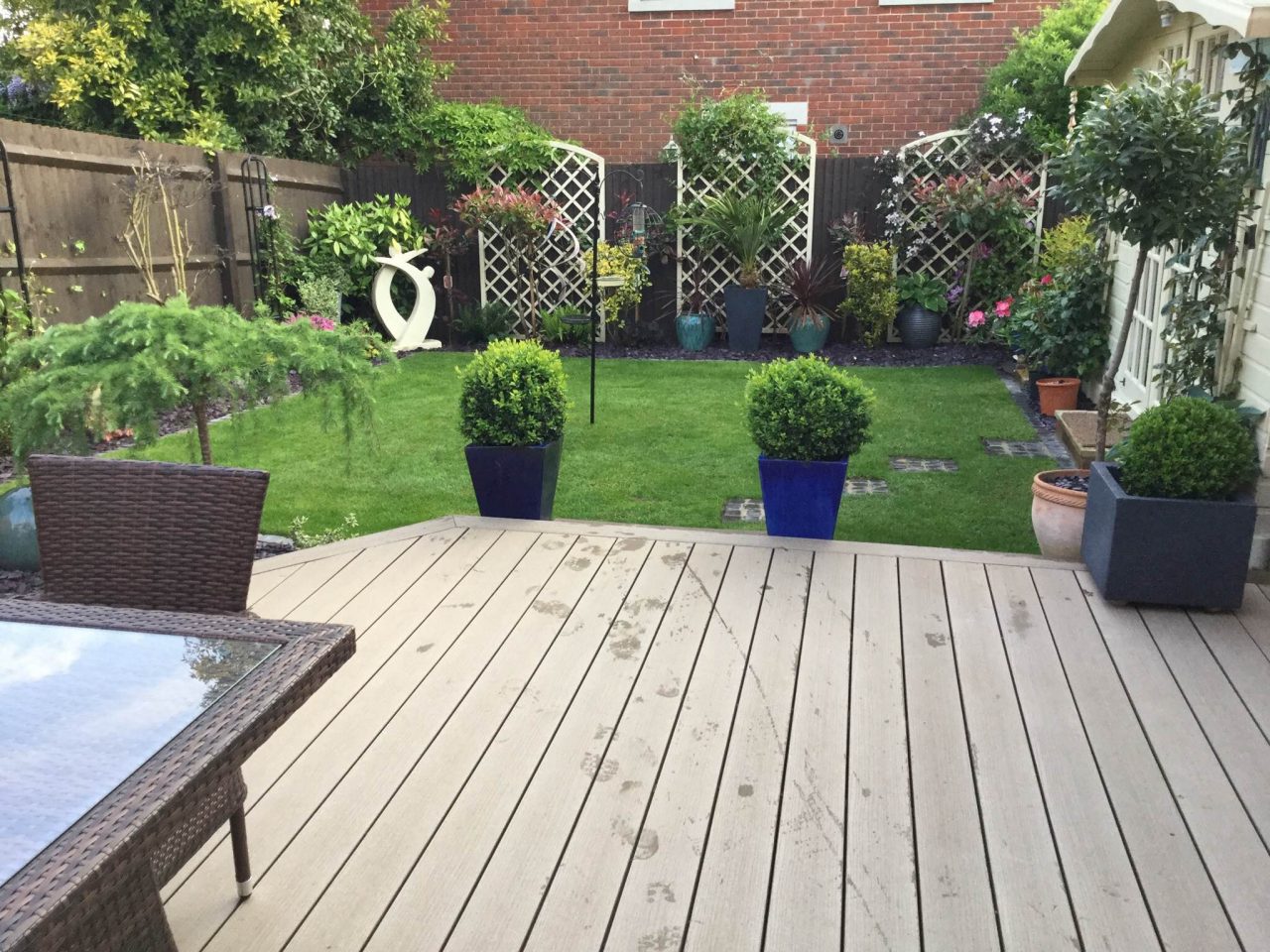If you’ve been thinking about enhancing your garden with some new decking, then no doubt you will have come across the alternatives to standard wood decking; composite and PVC. Both have become quite popular in recent years, as homeowners have become increasingly aware of sustainable and eco-friendly options for their homes. But what is the difference between these two options, and which one is best?
What is the difference?
As the name suggests, PVC decking is plastic, and therefore entirely synthetic. Composite decking on the other hand, generally known as “WPC” or “Wood Plastic Composite” is a mixture of wood fibres and plastic fibres, which have have been retrieved from places such as factory floors. By recycling these unwanted fibres, WPC ensures that the boards being used are more eco-friendly than PVC. Not only does WPC not require the same pollution-producing process as standard plastic, but recycling the fibres from other industries stops them going to landfill.
Isn’t composite more expensive?
If you place similar boards side-by-side, then you may find that WPC boards are a little more expensive than their plastic counterparts. However the differences between them make going for the more expensive option much more cost effective in the long-run. WPC boards generally look better than PVC, as the wood fibres give them a more “natural” look. PVC is also less like to withstand the test of time, you may find that it is more likely to warp or crack, especially during hot weather when the plastic expands and contracts frequently. Plastic decking generally needs to be replaced quicker than WPC, so you may find that in a few years you need to replace PVC boards, while your neighbours WPC shows little sign of wear and tear.
Why not just go with wood?
If you’ve been researching your decking properly then you’ll also be considering good old fashioned wood decking. It appears to be the easiest option, you may have found some good deals online, and the finished look may exceed that of PVC. However, many homeowners have decided against wood decking due to the maintenance it needs. PVC decking is also extremely slip-resistant, making it ideal at aquatics facilities and swimming pools. Wood decking is susceptible to damp and mould, especially during the damp British winters and occasional poor summers.
In order to keep it looking it’s best, you will find that you need to give wood decking a good varnish after it’s first been laid down, and then sand it down and re-varnish every few years. PVC and WPC decking doesn’t need nearly as much maintenance. A good hose down at the start of spring is enough to bring it back to good condition, and stubborn marks can be removed with some soapy water and a stiff brush.
